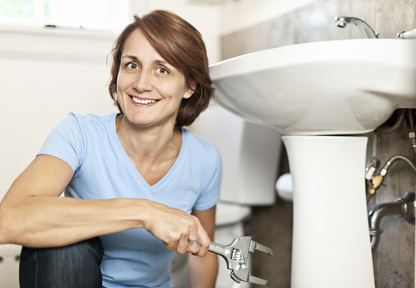Searching for Signs of Water Damage in the Bathroom
Visit Our WebsiteWhat're your thoughts regarding Preventing Water Damage in the Bathroom?

The bathroom is very susceptible for wet build-up and prospective water damage as a result of the regular use water in it. This post offers basic evaluation strategies to help identifying water damage threats.
The frequent use water in the restroom makes it exceptionally vulnerable for wet accumulation as well as potential water damages. By inspecting it frequently, you can lower water related problems.
The following collection of inspections is simple to execute and must be done once in every three months in order to maintain your restroom healthy and to avoid possible water damages triggered by the bath tub, the shower, pipe joints as well as plumbing, sinks, closets, and the bathroom
Do not forget carrying out these assessments and be extensive while executing them. Keep in mind that these easy assessments can conserve you a lot of cash by giving early indicators for water damages
Sinks and also Cabinets
Sinks as well as closets are revealed to moisture as well as moisture day-to-day and are typically ignored. Inspect routinely under the sink as well as on the countertop above it. Repair any kind of drip in the trap as it may suggest drain issues. Look around the sink, slow-moving draining pipelines may suggest an obstructed drain. Change sink seals if they are cracked or loose.
Bath tub and also Shower
The shower as well as bath tub need unique attention as well as maintenance. Check the tiles as well as replace if fractured. Make sure that there is no missing cement between the tiles. Evaluate as well as replace fractured caulking at joints where the walls fulfill the flooring or the bath tub. Clogged drains pipes and pipes problems will prevent the bathtub from drying as well as may suggest major issues below the tub. Talk to an expert right away to avoid structural damage. Take note of discolorations or soft areas around the bathtub walls as they might show an inner leakage.
Plumbing
Signs for water damages are difficult to spot because many pipes are installed inside the wall surfaces.
Pay unique interest to flooring as well as walls moisture and also discolorations as they might suggest an unnoticeable plumbing problem. Check dampness degrees in adjacent rooms as well.
The Toilet
The bathroom is a susceptible water junction. Examine the water lines and also search for leaks around the commode seat, in the pipe, and under the water container. If you identify any type of indications of dampness on the flooring around the toilet, look for leaks in the toilet rim and also storage tank seals.
Understand that hanging toilet dish deodorants increases the opportunities for blockages.
TIPS TO PREVENT WATER DAMAGE IN THE BATHROOM
The average household uses approximately 80-100 gallons of water per person per day. For a family of 4, that's almost 2,500 gallons of water a week! The largest portion of this consumption comes from bathroom use. Flushing the toilet uses the most water, followed by taking a shower or bath. With that much water running through the home, water damage in the bathroom is bound to happen. Knowing how to spot signs of a water leak is essential to preventing long-term damage. This guide provides you with tips to reduce the impact of water damage on your bathroom.
CAUSES OF BATHROOM WATER DAMAGE
Pipe breaks are the most common cause of water damage we see in our daily jobs. The age of a pipe plays a large role in a pipe break as well as corrosion. Over time, the metal begins to break down, allowing water to escape. Frozen pipe breaks are also a concern in the winter months. Toilet overflows caused by paper products or children flushing inappropriate items. Degraded caulking around the toilet or bathtub can allow water seepage, sometimes behind the fixture, into the subfloor or walls. Condensation forms when the water in a pipe is cooler than the air temperature. Beads of water form on the exterior of the pipes, sometimes so much so that the water begins to drip and pool below. Sink or shower backups created by poor drainage. HOW TO PREVENT WATER DAMAGE IN YOUR BATHROOM
Inspect your toilet supply line for worn or frayed hoses and replace them as needed. Winterize your plumbing to prevent a frozen pipe break. Use vent fans to prevent condensation that can lead to mold growth. Routinely check and replace degraded caulking around your toilet or bathtub. Increase the temperature in your toilet tank and insulate your pipes during the warm summer months to keep condensation from forming. Use child safety locks on the toilets. Flush only toilet paper. "Flushable" wet wipes are actually not good for your plumbing system. Additionally, feminine hygiene products should not be flushed. Prevent water from escaping the tub or shower. Make sure shower curtains are in good condition. Inspect shower doors and replace the seal strip if necessary. Wipe up any water that accumulates on the floor and use bath mats. Water left to sit can cause damage to the tiles and flooring. Refrain from using bath products containing heavy oils to avoid a clogged drain.

I'm just very drawn to Common Causes of Water Damage in a Bathroom and I'm hoping you appreciated the entry. Enjoyed our write up? Please share it. Let other people discover it. Bless you for your time. Visit us again soon.
Visit Homepage